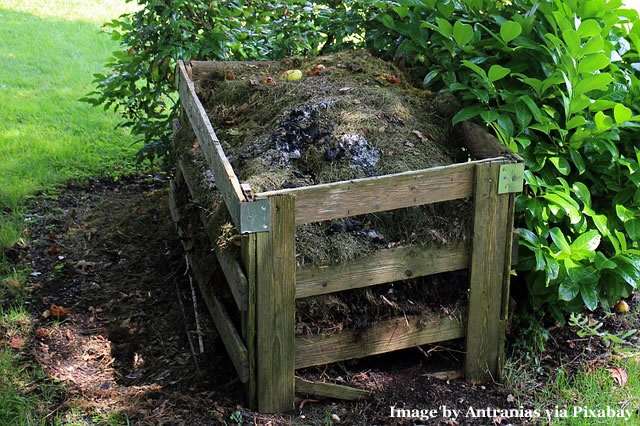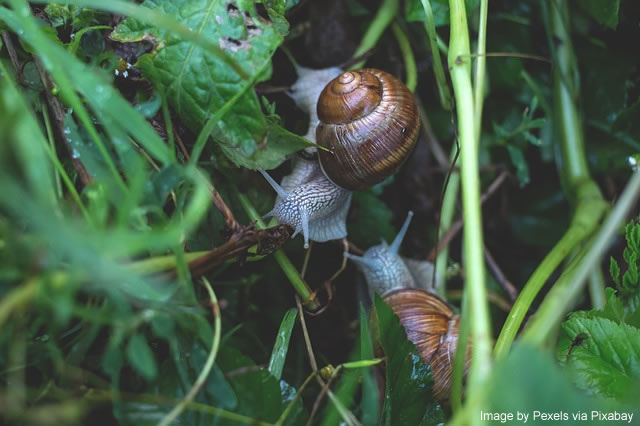We all love spending time in our garden but we’re often unsure if we’ve given our plants and seeds the best start. We put some of your questions to gardening expert Angela Slater from Hayes Garden World (www.hayesgardenworld.co.uk)
This is what Angela said:
As winter is coming to an end, what should we be doing in our garden?
This is the time of year to be looking after the soil; if the soil is in good condition now it will save time and money over the coming season. Incorporate plenty of organic matter in the vegetable plot; either home-made compost, composted farmyard manure or good quality peat-free compost from the garden centre. This will improve the drainage if the soil is a bit heavy or hold onto the moisture if you have a free draining sandy soil, thus cutting down on the watering when the weather picks up.
Mulch around your perennials in the borders with a layer at least 5cm (2”) thick; If possible after a good period of rain; this will suppress the weeds, which cuts down on backbreaking weeding later in the year, and help retain moisture. You can use chipped bark, cocoa shells or home-made compost. Mulch plants in pots with gravel or decorative glass pebbles or chippings; the rougher the material the more it will deter those pesky slugs. Mulching and improving the soil not only benefits the plants and the soil but is also a good way to shift those few extra pounds which accumulate over the winter!
If you have perennial plants in pots now is the time to take them out, clean out the crocks in the bottom to make sure there are no over-wintering slugs or slug eggs and make sure the hole in the bottom is clear. Clear away as much compost as possible from around the roots and re-pot either into a larger pot or the same pot using good quality peat-free compost with a little slow release balanced fertiliser added. Use the fertiliser appropriate for the plant; if it is an acid loving plant, such as a camellia, azalea, rhododendron or conifer use an ericaceous fertiliser.

As winter is coming to an end now is the last chance to plant any bare rooted plants before they come into growth in the spring; these would include any hedging, trees, roses or fruit. Prepare the ground by digging in compost and a little well-rotted farmyard manure and a handful of blood, fish and bone sprinkled into the planting hole. Make sure you water the plant well after planting.
Some seeds can be sown now to get a head start. If we have had a warm spell and the soil has warmed up a little some can be sown outdoors directly into their growing position; such as peas, beans, beetroot and carrots. These may have to be covered with a fleece cloche if there are cold spells forecast. If you have a cool greenhouse you can sow seeds such as: peppers, chillies, cucumbers, melons, cabbage, broccoli, and sweet peas. If you have a heated propagator the range is even larger, a lot of seeds just need a little bottom heat to get them started. Make sure the propagator is in a well-lit position otherwise when the seeds germinate they will become drawn and end up too weak to be any good. Most can be moved to the greenhouse once they have germinated and put on a little growth.
What’s the one thing you always plant in spring?
The one thing I cannot do without are summer bulbs; they give a glorious splash of colour, either in the borders or in containers. There are a huge variety of species to choose from with something to suit every style of garden, even if you only have a balcony. If soil conditions don’t allow for planting out start them off in pots. Plant all one variety in plastic pots then they can be inserted into a gap in the border and when they have gone over lift them out and replace with something else. If you plant them in stages over several weeks then you will have a show from mid-summer to mid-autumn.
Gladioli have been out of favour for several years but are now making a comeback. They inject a shot of colour and height into the border and can be grown in rows, to save space, along the edges of the veggie plots for a succession of cut flowers throughout the summer.
For sheer ‘wow’ factor plant tree lilies, they eventually grow to a height of 250cm (98”), reaching 180cm (6’) in their second year. They are ideal for a seasonal hedge, with the added bonus of being fragrant. They come in a variety of colours; pink shades, yellow and white with either single or double flowers. Try ‘Picasso’ (pure white double flowers), Monet (soft pink doubles) and Cezanne (double flowers in dark pink with a white edge). Plant them in free draining soil with a high organic content, which retains the moisture but doesn’t stay soggy. If you are planting in a container make sure it is large enough to take a tall plant without the likelihood of it becoming top heavy and blowing over. Use John Innes No 2 compost. Plant the bulbs 15cm (6”) apart and at a depth of 3 times their height. Remember to keep them well watered over the summer. They are like sweet peas and clematis in that they want their heads in the sun but their roots in the shade; if they are in a container it may be necessary to plant up some more containers and arrange around the lily pot to keep the sun from striking the sides of the pot.
As we head into summer what tips can you give us to naturally deter the pests that enjoy feeding on our young plants?
In the veggie garden it may be necessary to place a fine mesh over the brassicas to prevent Cabbage White butterflies from laying their eggs. Also netting young plants will prevent pigeons from pulling them out. If you only have a small area of vegetables you can use fleece cloches to protect the young plants. Planting smelly herbs like chives between the rows of carrots helps to disguise the smell of the carrots and deter the carrot fly. Planting a companion crop like calendulas and marigolds will lure the pests away from the more valuable veggies later on in the season.
Slugs can be deterred from your plants by sprinkling crushed egg shells, coffee grounds or bran around them. Mulching with a sharp grit will also deter them. Placing beer traps and half orange or grapefruit skins around the garden will attract them and then you can deal with the pests however you see fit (they make excellent bird food!). Plants in containers can be protected by placing a band of grease or copper around the pot or by mulching with sharp grit. There are now available pots which have a coarse, gritty finish and these will deter the slugs and snails.

We love Christmas, is there anything we should be planting now to ensure it’s at its very best for our Christmas table?
If you need a windbreak or a boundary planting, why not incorporate some evergreens such as holly, ‘Van Tol’ is a good variety with smooth leaves, which is ideal for table decorations. It has the added bonus of being self-fertile so does not need a partner in order to produce berries. There is also a variegated form called ‘Golden Van Tol which is useful for decorations with a gold theme. Euonymus fortunei ‘Emerald and Gold’ is another good evergreen, with a gold variegation.
If you have room plant a conifer for the sprays which can be used in a table decoration; don’t go for one with a defined structure as pruning some of the branches out may spoil the shape.
Crab apples always look good in a table decoration; one of the best red-fruited varieties is ‘Red Sentinal’, with the added bonus of gorgeous pale pink blossom in spring. Other good varieties include: ‘John Downie’ which has bright orange fruit and white blossom; ‘Profusion’, with dark pink/red flowers and purple fruit and ‘Golden Hornet’, with bright yellow fruit and pink/white flowers. They are all fairly small trees so are suitable for the small garden and even for growing in a large pot. There should be enough fruit both for your decorations and the birds.
If you like a rustic style linear decoration down the centre of the dining table try planting a Corylus avellana ‘Contorta’ or the Corkscrew hazel. Anyone who has tried to buy these stems at Christmas will that they are horrendously expensive. They can look fantastic sprayed with metallic paint for a minimalist decoration.
If you, like the team at UnderTheChristmasTree, really enjoyed reading Angela’s hints and tips for round the garden then we’re sure you’ll want to read more.
This must be your lucky day, because you can read part two of Angela’s gardening piece here: Exclusive Q & A with Gardening Expert Angela Slater on Thursday!

If you gardening want, you can pick the kind of siding it will have the same look
in every season. While most are designed for 24 hour usage in a damp environment, but
never allow them to become soaked with water!